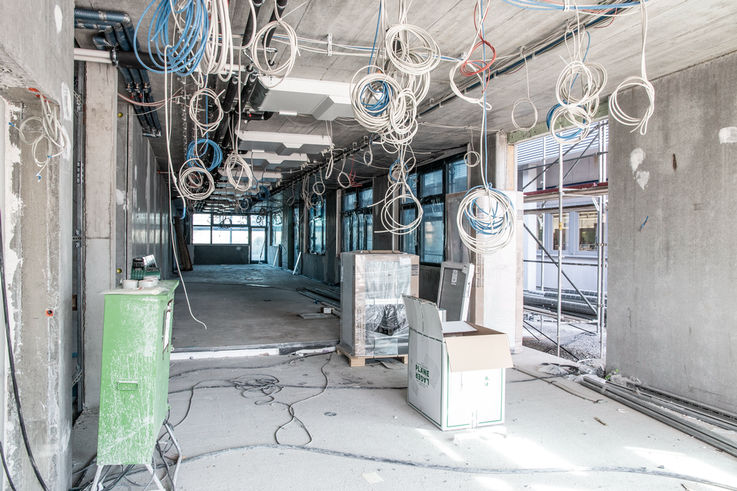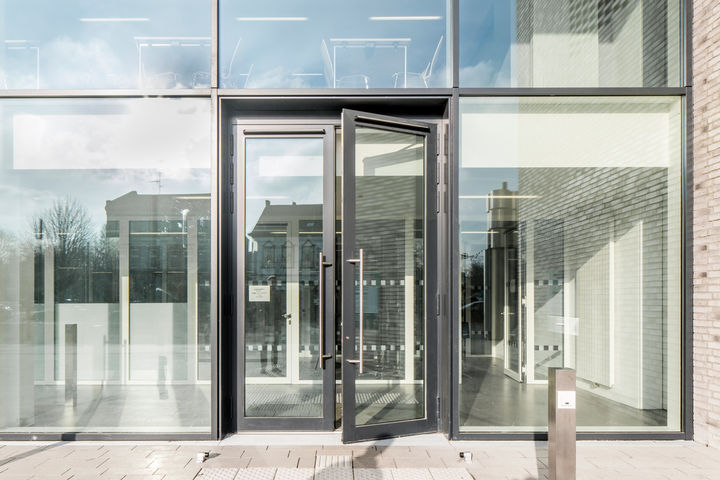Reliable planning for multifunctional doors – GEZE can help!
Doors typically need to fulfil a variety of different needs, making door planning a complex task. The sheer number of doors involved in large projects can quickly become confusing. It is difficult for even experienced construction professionals to identify the right door solutions and submit compliant calls for tender. The most important step is to clarify all applicable needs and safety functions as early as possible. Re-planning complex doors or making technical adjustments later on costs time and money and creates stress. Planners can turn to specialists for support in this respect.
Door technology and standard requirements have changed enormously
Often, doors are expected to do a lot of different things, especially in public buildings, hospitals and shopping centres. For example, they need to provide universal access and be easy to use by anyone. They should provide smoke protection, closing automatically in the case of fire alarm. They need to help control access, or might be connected to a burglary alarm system or building services. They may even be part of a smoke and heat extraction system and need to open automatically in case of a fire. There are more and more modern, especially digital options in door technology. Construction law, safety technology and functional requirements are also increasing. This makes doors not only complex, but frequently complicated as well.
Sometimes, a single door can combine up to 50 features
GEZE safety expertComplex doors need clear installation responsibilities

Door openings for complex doors in shell construction: Overall coordination of different trades can often be a problem during installation. Without good coordination, door wiring can remain unfinished.
Architects generally handle door planning. However, this can be a major challenge for doors with multiple functions and electrical components – for example if hundreds of different doors (or more) with widely differing demands are needed for a project. In such cases, it is important to determine who is responsible for coordination, safety technology and wiring early on. Otherwise, doors and components may be delivered and installed, but not properly wired after that because no one feels responsible for the work. Completing adjustments or renovations on the construction site at a later stage can be expensive and time-consuming.
Door planning means coordinating requests and demands promptly
Prompt door planning could be a great help here: ideally, workshops with the architect, building owner and door experts should be integrated into the planning phase as early as possible. These should address the following questions: Who should be able to use the door when, and in what form? What are the applicable building engineering needs (fire protection, emergency exit, smoke and heat extraction)? What is needed in terms of noise protection, comfort and design? This helps to identify conflicts between different parties’ requests and expectations, or determine whether they will generate major technical expenses. If a door is especially wide or tall, for instance, it will be very difficult to make it accessible and to secure it. In this case, the specialists need to inform about the alternatives: “What about building the door differently? These alternatives make it easier to deliver on the technical demands.” Careful planning guarantees faster, smoother, and generally less expensive implementation during the construction phase.

Often, a single door can have multiple safety demands, with associated sensors, push buttons and equipment. This makes door planning challenging.
Door lists are an insufficient planning instrument
According to door experts, classic door planning methods using door lists in table form are no longer enough. In some cases, a single door can combine up to fifty features. Door lists, however, cannot determine feasibility or stipulate responsibilities. Each new specification adds technical components, and typically additional wiring. Often, this can clash with the architect's ideas, who traditionally is not responsible for electrical planning. Electrical planners, however, do not typically participate in door planning. The fee structure for architects and engineers (HOAI) indicates they are not paid for this kind of work. As a result, complex doors are not included in the planning at all.
‘Incomplete’ doors are a safety problem
When tender texts are based on unreviewed door lists, and components delivered to match, the following scenario is not uncommon: A metalworker installs the door, but doesn’t touch the wiring. An electrician installs the wiring to the door, but doesn’t connect it to the door components. After all, this isn’t part of their job. A fitter handles specialised orders, but doesn't understand the overall concept for the door. Ultimately, the door may not be completely finished, and may not work as the building owner expects. This is because coordination between different trades is often underestimated.
However, incomplete doors can pose safety risks. This can be an issue if each individual function was tested, without testing overall door function. The door may close in case of a fire, but then may not reopen as an emergency exit door. Or the fire protection system, which should centrally control all the doors in the building in case of danger, may not work. Renovations or other adjustments may be needed to solve these kinds of technical problems later on. Often, this causes delays on the construction site, higher costs, or revenue loss.
Door planning with all trades as a success factor for multifunctional doors
The best way to counteract these issues is prompt, detailed and joint door planning! We always provide comprehensive advice to support our customers in door planning and execution. We support you through the design phase and in coordination with the technical building services planner or electrical planner. We also work with all stakeholders throughout all phases of construction, including metalworkers, electricians and fitters. We cover the entire life cycle of the door with our portfolio: from maintenance, renovation or reuse – all the way to disposal if needed..
Good to know
Plus: GEZE also provides its own BIM objects as a helpful tool. These can be valuable during planning, construction, and operation. You can download GEZE BIM objects free of charge at bim.geze.de and integrate them into your CAD system. We can help you create BIM processing plans and help with the requirements necessary for door objects for proper and integral door planning. Because we think in terms of solutions that combine products, software and services, we get involved right from the start of your project. We can take the work of dealing with door and element lists away from you, for instance, so you can concentrate on what is most important.



